If you follow our blog, you might have read our previous post about The Art of Back Papers. Let’s dig a little deeper into the backstory behind three button manufacturers who used back papers, and whose buttons are featured in our collection.
Whitehead and Hoag
B.S. Whitehead began his career as a printer and got into the button business in the 1890s. Whitehead & Hoag, a novelty company organized in 1892 in Newark, New Jersey began using back papers in their 1896 buttons and continued into the 1950s.
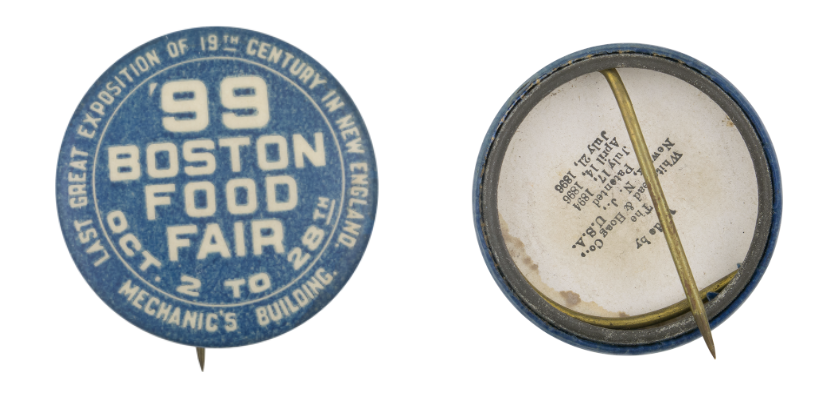
The earliest back papers were covered in thin, clear celluloid or varnished and printed with the company name, the patent date, and place of manufacture.
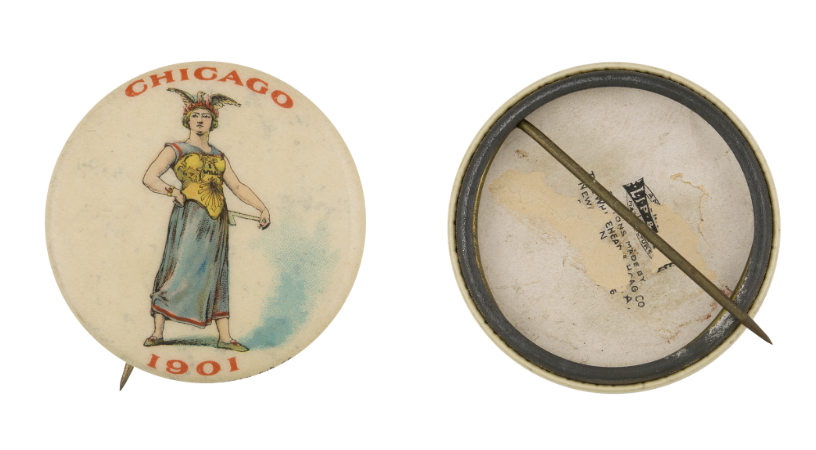
The varnished finish was phased out after a few months, and designs changed throughout the decades. Starting in the early 1900s a union stamp was added to the labels. By the 1930s, the union bug and patent numbers no longer appear on Whitehead & Hoag back papers.
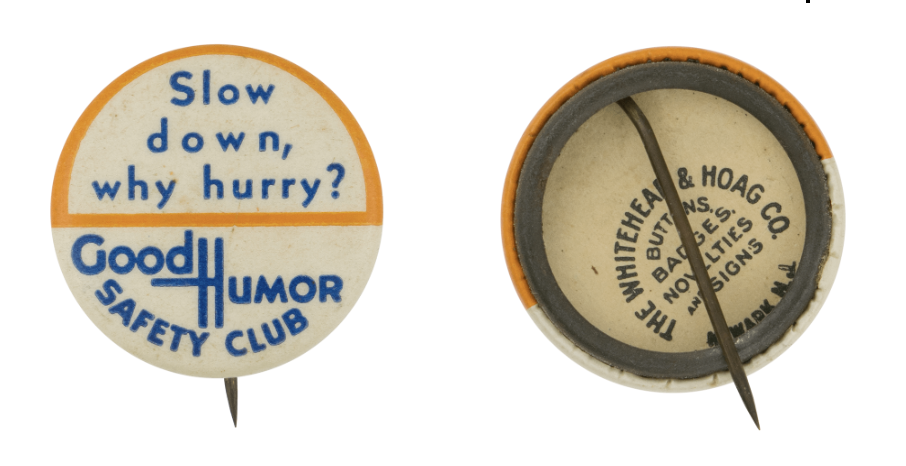
Brunt
San Francisco-based printing company Walter N. Brunt Co. appears to have started in the pin-back button business in 1899, around the time companies were transitioning from a ribbon badge design to the modern metal design for pin-backs. While Brunt back papers do not feature the dates of manufacture, the address information can be used to approximate dates for the buttons.
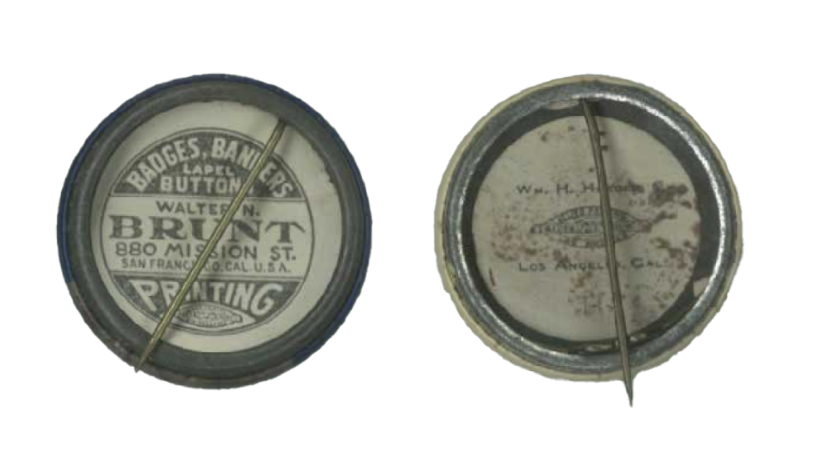
Green Duck
Chicago-based Green Duck company started in 1912 as a maker of metal novelties. In 1923 they purchased the J.L. Lynch company, also of Chicago, and the inventor of the modern day (1917) lithograph tin button with a spring pin on the reverse. Designs on the metal backs changed throughout the years, as can be seen below. Curious to see the fronts? Click here.
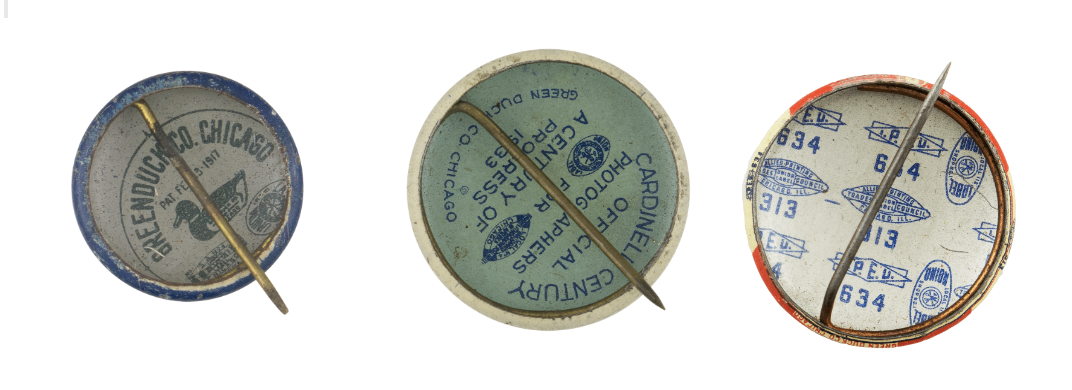
Green Duck backs featured various logos on different color backgrounds that correspond, broadly speaking, to the years of manufacture. For example, the button below is dated to 1932 and has a green back printing.
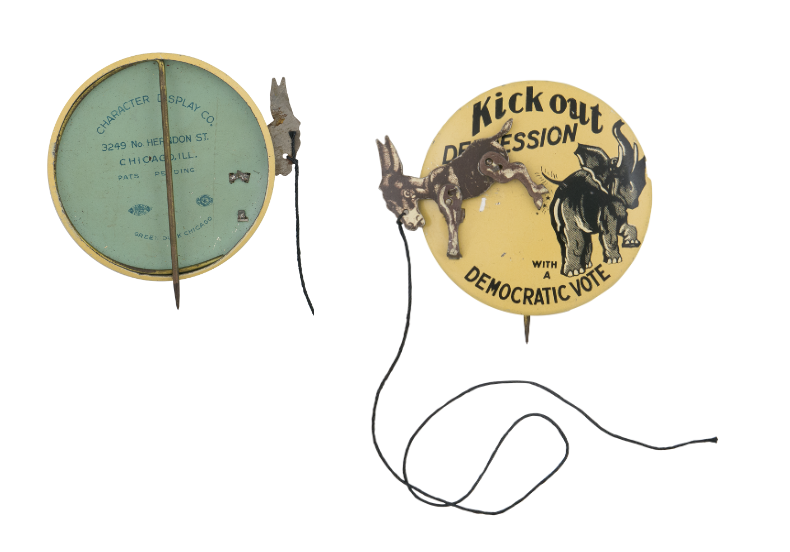
While we know some things, like all historical research, the story of back papers is still being uncovered. Follow the links below to view more buttons in our collection. Maybe you'll be inspired to you to do your own research!
Buttons in the museum manufactured by Whitehead & Hoag Company
Buttons in the museum manufactured by Brunt
Buttons in the museum manufactured by Green Duck
American Political Items Collectors, Popular Culture Chapter. (2018) Researching Buttons.
Branvold, B. (2022, January 3). A Study of Western Button Manufacturers. Montana and Presidential Election Memorabilia [Blog post] Retrieved from https://collectingpoliticalbuttons.com/?p=215
Brunt, W. N. (1985). U.S. Patent Number 24,432. Washington DC: U.S. Patent and Trademark Office. Google Patents. Retrieved from https://patents.google.com/patent/USD24432S/en
B.S. WHITEHEAD, 82, DEVISED NOVELTIES: Board Chairman of Whitehead & Hoag, Manufacturers of Advertising Articles, Dies BEGAN CAREER AS PRINTER Newark Resident Was Patron of Music and a Leader in Boys' Welfare Work (1940, April 18). TimesMachine [Clipping from New York Times, newspaper]. Retrieved from https://nyti.ms/3ZXq015
Hake, T. (2023). GLOSSARY. TedHake.com [Blog post]. Retrieved from http://www.tedhake.com/viewuserdefinedpage.aspx?pn=glossary
